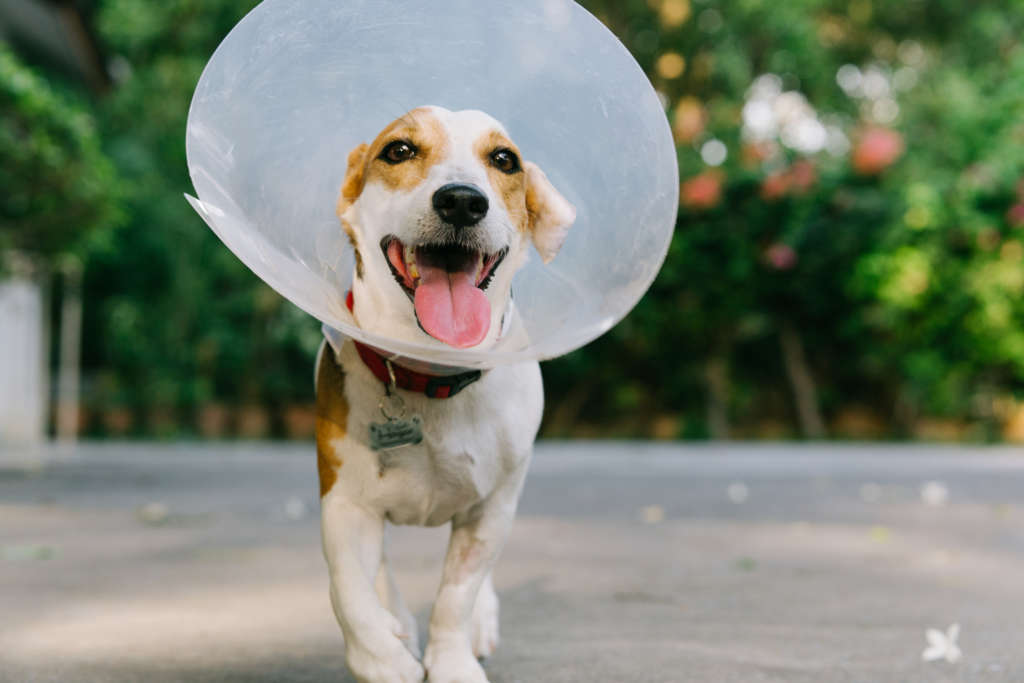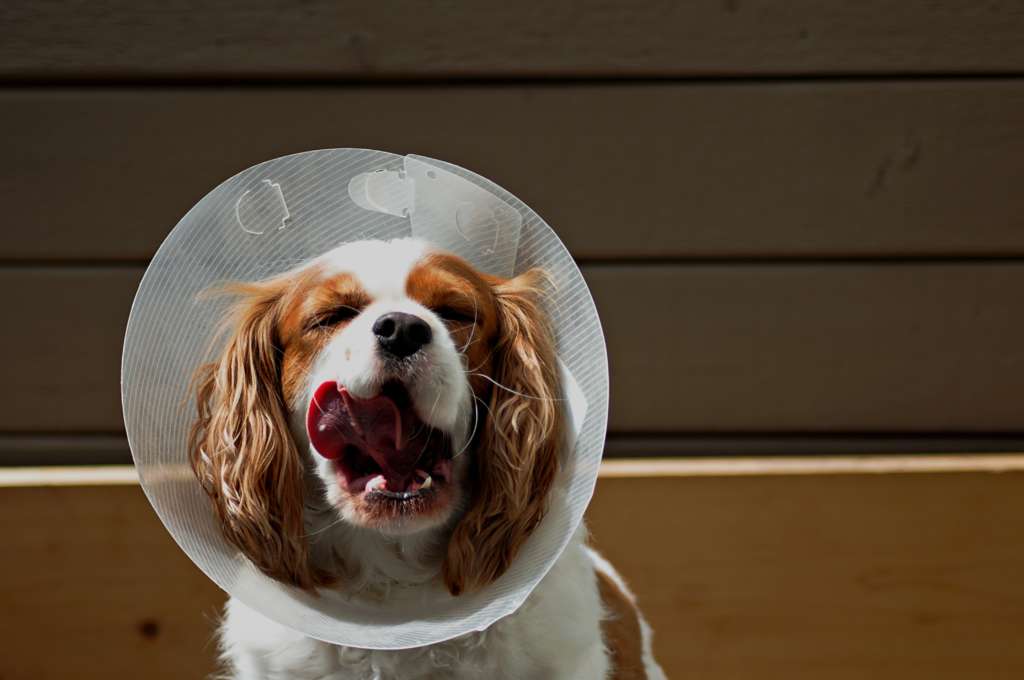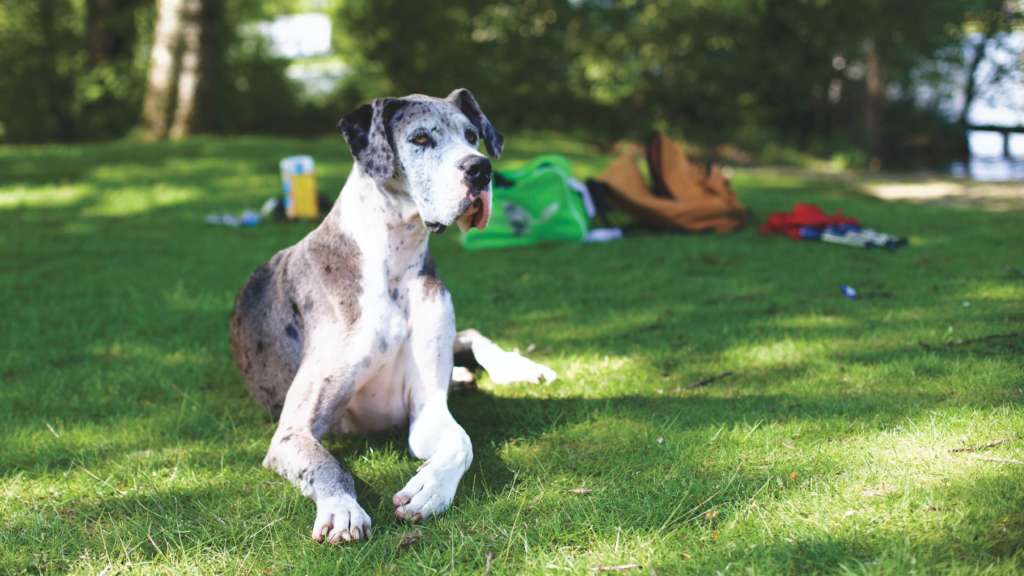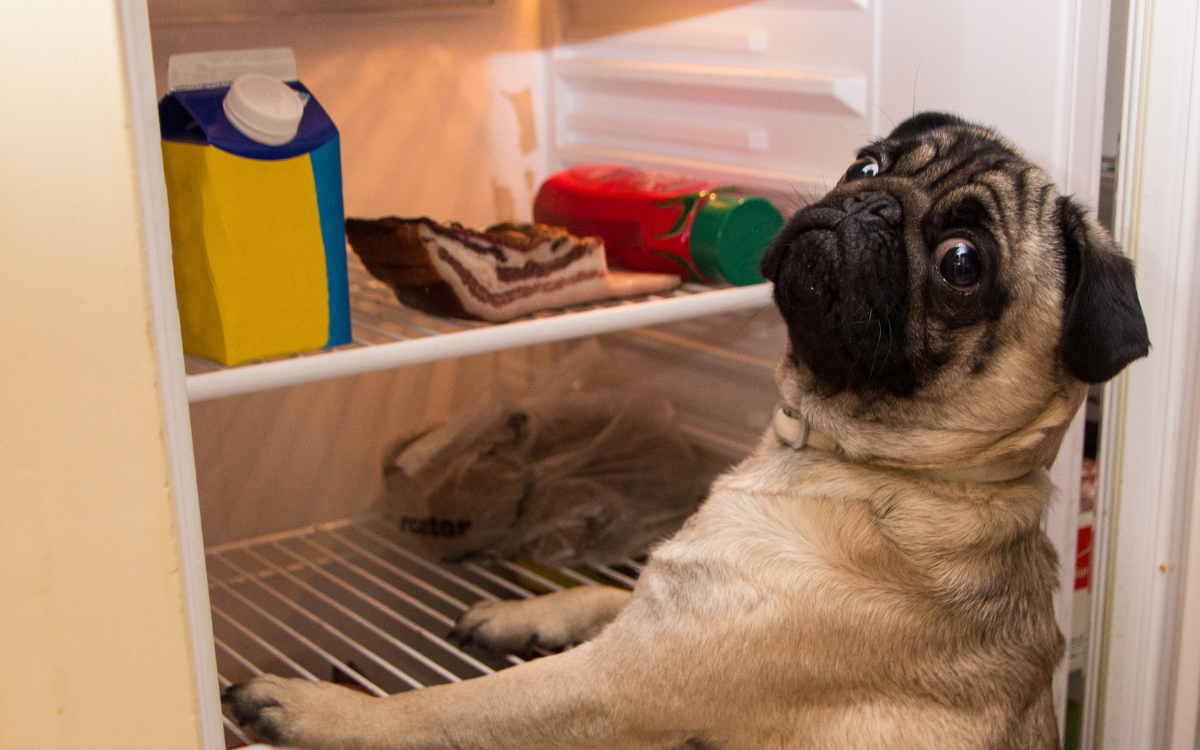All the benefits of spaying and neutering support something we all want for our dogs: a longer, happier, healthier life, and the reduction of unwanted dogs in shelters due to overpopulation is nothing to shake a stick at. Maybe throw it, though.
Answering the question of when to spay or neuter your dog is much tricker and depends on the individual dog, but your vet is there to help you make the best decision.
What Is Fixing, Spaying, And Neutering?
Fixing is the term used to refer to surgical sterilization of a companion animal by removing the gonads1. In females, this is referred to as a spay, and the ovaries are removed. This can be the removal of the ovaries alone (ovariectomy) or ovaries and uterus (ovariohysterectomy)1,2. In males, it’s referred to as a neuter, during which the testicles are removed2.


Why Should You Spay Or Neuter Your Dog?
The first goal, from a population level, is to prevent unwanted puppies1, 3, 4. This is particularly important in a shelter environment where the goal is to prevent future unwanted pets. As a result, most dogs adopted out through US shelter systems are already spayed or neutered, or their new humans are given options to provide them with the surgery at no charge in the near future3.
Until recent years, spaying or neutering an animal prior to puberty (at or less than 6 months old) was a general recommendation3, but in recent years new information has led to less clear guidelines4. Spaying and neutering animals is still the norm, but ideal timing is where things get confusing.
So what does the data tell us? Let’s break this down into categories for both male and female dogs:
Pros Of Spaying & Neutering
- Dogs are less likely to roam1 (a.k.a. run away trying to find a love connection and potentially get lost).
- Dogs experience less inter-dog aggression1, 4. There’s a reason most dog parks have a separate fenced area for intact dogs (or recommend not using the park if your dog is still intact). Even if the intact dog is friendly, other dogs are more likely to be interested and overstimulated, which may result in an attack.
- Dogs are less likely to experience significant trauma, such getting hit by a car while roaming, or receiving wounds from a sudden dog attack3.
- Dogs experience fewer infections of reproductive organs1, 2 that remain after removal of the hormonal influence (that’s the ovaries or testicles). Once those hormones are gone, the tissues that remain shrink down and are less active.
- Dogs display fewer hormonally-driven behaviors, like marking, humping, and aggression1-3.


Potential Cons Of Spaying & Neutering
Short-Term
This is a surgery, usually categorized as elective, and has inherent risk. Dogs with underlying medical conditions or bleeding disorders can be at increased risk of complications. If you have any questions or concerns about your dog’s individual risk or the possible complications, talk to your veterinarian about their assessment. In general, complications that lead to long term consequences are very rare.
Long-Term
Obesity is more common in animals that have been spayed or neutered1,2. This can be managed by appropriate diet and exercise, but does require more monitoring on your part as your animal ages2.
Spaying or neutering a dog can also increase the risk of some other conditions, including:
- Bladder cancer (transitional cell carcinoma)2,4
- Mast cell tumors (potentially aggressive cancer)4
- Diabetes4
- Hypothyroidism4
- Urinary incontinence in females1,2
- Prostate cancer in males4 (very rare, but can be serious)
When looking at the whole picture, these risks are real, but can be monitored or managed. Especially if you know what to look for and when to have your pet seen by a vet. Early detection and intervention in any disease process is best—talk with your dog’s veterinarian to better understand how to monitor for these diseases.


Special Considerations For Large & Giant Breeds
XL pups have been noted to have an increased risk of developing certain diseases, particularly if spayed or neutered before going through puberty, including:
- Bone cancer (osteosarcoma)2,4
- Blood vessel cancer (hemangiosarcoma)2,4
- Joint disease (cranial cruciate ligament rupture, hip dysplasia)3,4
Both types of cancer are considered aggressive and life-threatening. Joint disease can be managed, but often significantly impacts quality of life as dogs age.
There is a question as to whether the timing of spaying and neutering reduces the risk of development of these diseases. Studies that support spaying and neutering after puberty to reduce these risks are largely from data on individual breeds or small sample sizes, and are suspected to apply to all large breeds based on preliminary understanding2.


For this reason, some practitioners are recommending waiting until sexual maturity (after puberty) to spay or neuter large and giant breeds. The idea is to allow the bones, organs, and joints to fully develop before removing hormonal influence1,2. Smaller dogs reach sexual maturity and final size younger (usually shortly after 6 months of age) than large and giant breeds, which is why these considerations are not thought to apply to them.
Note: If you do decide to wait to fix your dog until after sexual maturity and they develop the hormonally driven behaviors discussed above, those behaviors may be permanent. Aggression commonly presents in intact males going through puberty.
More Benefits Of Spaying (Female Dogs)
Ladies first! In addition to the above pros and cons, spayed females also have reduced risk of:
- Mammary Cancer: If spayed before puberty, the lifelong risks of mammary cancer in dogs is minimal1,3. With each heat cycle (a.k.a. period), the risk increases1,2, so spaying prior to sexual maturity is ideal to minimize mammary cancer risk. This complicates decisions for large and giant breed female dog parents, though you can help catch any suspicious lumps early by giving a thorough belly rub every month.
- Reduced Risk Of Uterine Infections (Pyometra)2,4: Pyometra is a life-threatening condition in female dogs that causes the uterus to fill with pus. It makes dogs very sick and, if left untreated, can quickly lead to death. This is particularly troubling because the symptoms are vague and not specific; some female dogs with pyometra only appear lethargic with a loss of appetite.
Pyometra occurs in dogs with hormonal stimulation from ovarian tissue. Reducing the risk depends on complete removal of all ovarian tissue, not the removal of the uterus. So either form of spay is equally effective as long as all ovarian tissue is successfully removed2.
- Ovarian Diseases1,2
- Uterine/Vaginal Prolapse1,2
- Heat Cycle, Pregnancy, & Delivery-Related Complications1
Risk reduction isn’t dependent on how old your dog is when they’re spayed, but if they’re sexually mature, discuss the best timing during their cycle to spay with your veterinarian.


More Benefits Of Neutering (Male Dogs)
And now, the gentlemen. Neutered male dogs are at reduced risk for:
- Benign Prostatic Hyperplasia1,2: The most common signs include inconsistent or weak urine streams. This can also be confused as straining to poop or experiencing chronic diarrhea.
- Testicular Cancer2
- Perineal Hernias4: With this condition, dogs develop a swelling to the side of the tail that contains abdominal or pelvic organs (bladder or bowel)—it’s an emergency, so get them to the vet ASAP.
There is no evidence that these benefits are age-dependent as long as the dog has not developed them prior to being neutered.
Colleen Ferriman, DVM, is a canine and feline health, wellness, and illness management advocate. She has a combined 10 years of experience in clinical medicine, education, and educational content development. Colleen graduated from Colorado State University as a Doctor of Veterinary Medicine, has worked as a general practitioner, and has contributed to the development of veterinary educational tools. She is also a member of the American Veterinary Medical Association and American Academy of Veterinary Pharmacology and Therapeutics.
Sources
1Romagnoli S: Prepuberal and Postpuberal Gonadectomy: Techniques, Advantages and Health Consequences in Dogs and Cats. World Small Animal Veterinary Association Congress Proceedings VIN 2018.
2Tobias K: Updates in Gonadectomy. Western Veterinary Conference Proceedings VIN 2020.
3Bushby PA: Pediatric Spay and Neuter. Wild West Veterinary Conference Proceedings VIN 2015.
4Berg J: The Spay/Neuter Controversy. Southwest Veterinary Symposium VIN 2017.






